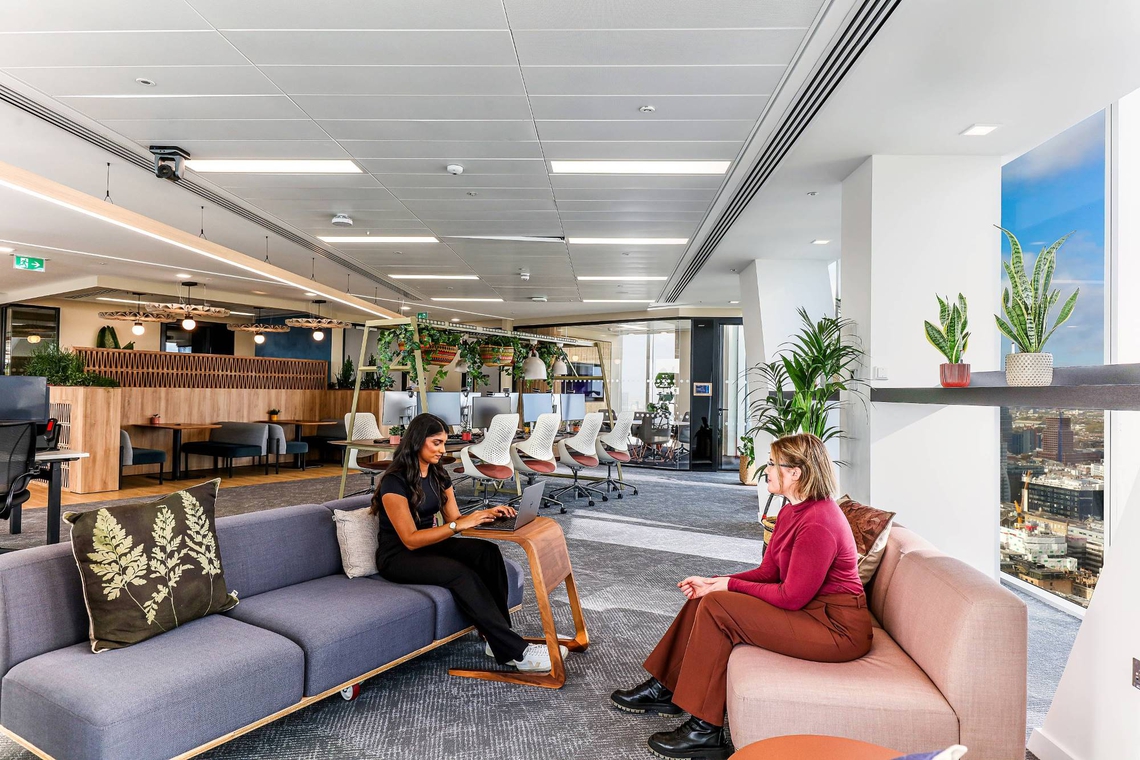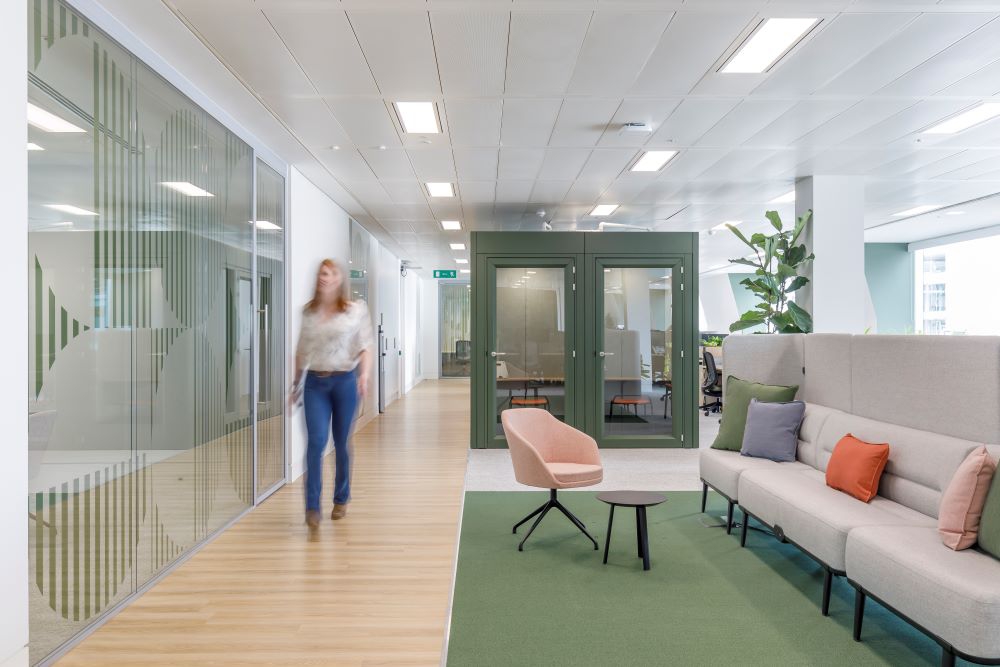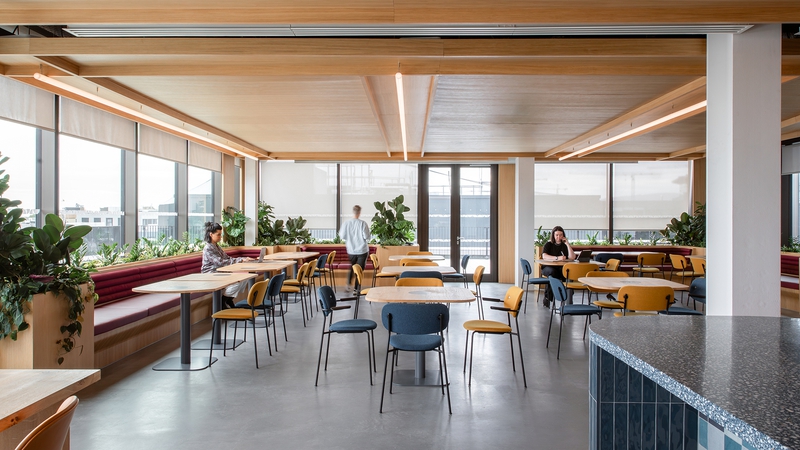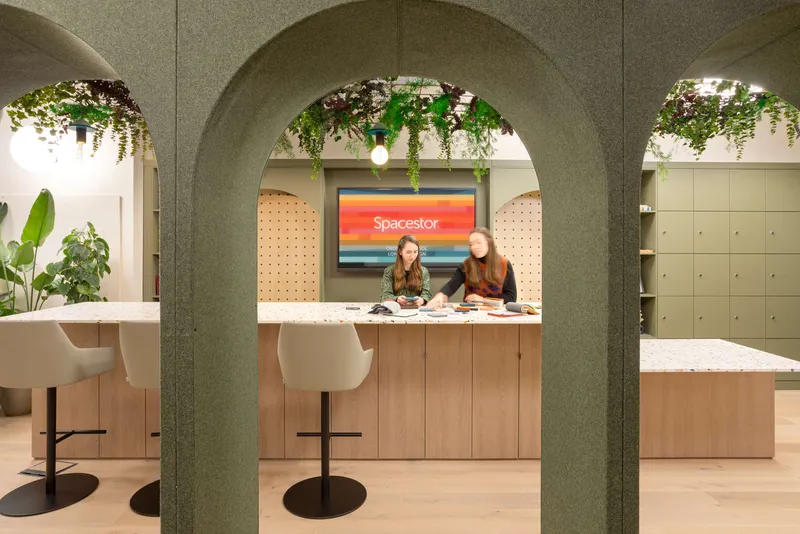
Top 7 Workplace Trends for 2025
Thoroughly imbedded in an era of constant evolution, businesses and employees alike adapt to the undeniable pull of shifting demands, technologies, and values
What will 2025 be for the workplace? Thoroughly imbedded in an era of constant evolution, the workplace is undergoing a transformation, as businesses and employees alike adapt to the undeniable pull of shifting demands, technologies, and values. In 2025, the focus is clear: smarter tools, meaningful choices, and inclusive cultures will redefine how - and where - we work. From the rise of AI-driven innovation to creating spaces that embrace individuality and neurodiversity, these trends aren't just predictions; they're a glimpse into the workplaces that will thrive in the years to come. Here’s what’s shaping the office of tomorrow.

AI-Driven Workplace Innovation
AI is increasingly integrated into workplaces to streamline processes and drive productivity. Around 75% of knowledge workers report using AI at work to save time, boost creativity, and focus on high-priority tasks, while 79% of business leaders view AI adoption as crucial for competitiveness.
Whilst AI has been on the peripheral for a few years, it has now well and truly landed, revolutionizing the workplace by automating routine tasks, enhancing decision-making, and boosting productivity. As this technology continues to evolve, many are looking to Agentic AI to complete common tasks. Agentic AI can independently make decisions and take actions to achieve specific goal, rather than relying on human-input. This trend fosters a more adaptive work environment where employees can focus on higher-level tasks while AI handles the rest. As AI continues to evolve, it will shape not only the tools we use but also how we interact with our workspace and manage work itself.

Choice, Not Variety
Workplace personalization is in demand, with 58% of employees wanting customized work environments that reflect their preferences, rather than generic options. Tailoring environments to meet these needs can produce a 15% boost in employee satisfaction.
As workplaces mature, employees now seek environments that reflect their unique work styles rather than a blanket approach to flexibility. The focus is shifting from offering a wide array of choices to providing meaningful options tailored to individuals' specific needs and preferences. We're seeing this trend move beyond novelty and early adoption, emphasizing thoughtfully curated choices that truly support productivity, well-being, and collaboration, from all of our clients. It’s no longer about simply offering more options, but about offering the right options for the diverse needs of today’s workforce.

Re-Densification
As organizations recalibrate their real estate strategies, re-densification—maximizing the use of existing office spaces—is emerging as a key initiative. Far from simply squeezing more people into less space, the focus in 2025 is on achieving purposeful density that prioritizes collaboration, functionality, and employee well-being.
Re-densification is not about returning to the overcrowded offices of the past but about creating spaces that foster energy and efficiency without sacrificing the human experience. By focusing on thoughtful layouts, adaptable furniture solutions, and advanced technology, companies can meet the evolving needs of their workforce while driving sustainability and cost savings.

Authentic Experiences
There’s a shift toward purpose-driven engagement, with data showing a 30% improvement in employee retention when workplaces offer genuine, impact-driven involvement.
Employees are moving away from superficial gestures like "coffee badging"—where participation is minimal or performative—and are now seeking deeper, more authentic involvement in the workplace experience. Employers are creating environments where employees can have a real impact, rather than showing up for perks, offering opportunities for meaningful involvement in decision-making and shaping the workplace culture. This promotes deeper, purpose-driven engagement, ensuring employees contribute authentically to both their roles and the broader organizational mission.

The Return of the Retirees
The share of baby boomers returning to the workforce in 2023 after retiring was 23.9% higher than in 2022. What’s more, the share of baby boomers that exited retirement last year (13.2%) is at a five-year high.
More older workers are remaining in, or rejoining the workforce, driven by longer life expectancy, financial needs, and a desire for continued purpose and social engagement. This "unretirement" trend, with a growing percentage of people over 65—and even 75—remaining employed, will extend the careers of Boomers but also create competition for jobs and promotions amongst the rest of the workforce. Younger workers may find themselves facing challenges in moving up the career ladder as previous generations remain in the workforce longer than expected.

Turning Side Hustles into Careers
60% of skilled professionals now considering gig-based roles as they seek flexibility and autonomy.
The gig economy is expanding beyond traditional roles and in 2025, more skilled professionals are anticipated to adopt this freelance model, drawn by the flexibility and autonomy it offers. This change is fuelled by the decline of the "job for life" mentality and a growing demand for more dynamic, flexible work. Sectors facing skill shortages, such as healthcare, AI, and cybersecurity, will see significant growth in gig-based roles. To stay competitive, organizations must adjust by offering project-based opportunities that attract and retain top talent in this evolving landscape. This transformation could reshape traditional roles and hiring practices by 2025.

Building Neuroinclusive Cultures
Neurodivergent employees, who represent an estimated 17% of the workforce, offer unique skills and perspectives but have often faced substantial employment barriers.
As awareness of neurodiversity increases, more companies are likely to prioritize hiring neurodiverse individuals, tapping into a talent pool that includes those with autism, ADHD, and dyslexia, many of whom remain underemployed. To address this, businesses will focus on not only recruitment but also fostering an inclusive, supportive culture that accommodates neurodiverse employees. This will involve offering resources, training for managers and staff, and promoting neuro-acceptance within the organization. Embracing neurodiversity goes beyond a diversity and inclusion initiative—it's a strategic business move that can improve problem-solving, productivity, and overall organizational performance.

The trends shaping 2025 signal an enriched, more impactful workplace - where AI empowers, personalization thrives, and inclusivity defines success. As we embrace these pillars for progress, we won’t just be creating better offices – we’ll be building environments that inspire, engage, and drive meaningful change.







An experiential and destination space for architects, designers and workplace strategists looking to discover ways to c…
ARCHITECTURE & DESIGN

Spacestor believes the future of the workplace is more than just a physical space - it's an experience, a destination –…
ARCHITECTURE & DESIGN